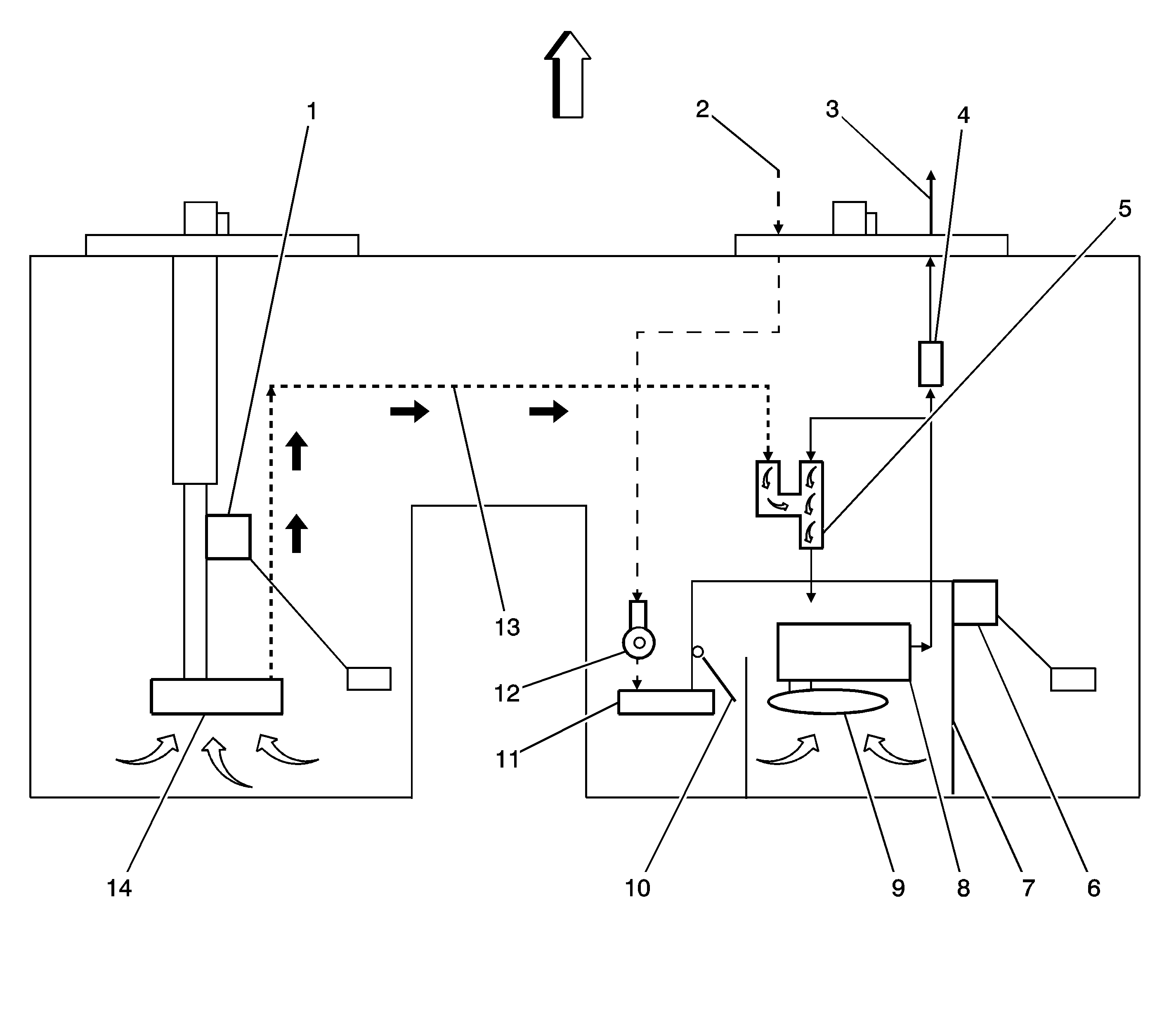Fuel System Overview
This vehicle is equipped with a returnless fuel system. The fuel pressure regulator is a part of the modular fuel sender assembly, eliminating the need for a return pipe from the engine. A returnless fuel system reduces the internal temperature of the
fuel tank by not returning hot fuel from the engine. Reducing the internal temperature of the fuel tank results in lower evaporative emissions.
The fuel tank stores the fuel supply. An electric turbine style fuel pump attaches to the modular fuel sender assembly inside the fuel tank. The fuel pump supplies high pressure fuel through the fuel filter and the fuel feed pipe to the fuel injection
system. The fuel pump provides fuel at a higher rate of flow than is needed by the fuel injection system.
Fuel Filler Cap
Notice: Use a fuel tank filler pipe cap with the same features as the original when
a replacement is necessary. Failure to use the correct fuel tank filler pipe cap can
result in a serious malfunction of the fuel system.
The fuel tank filler pipe is equipped with a turn to vent screw on the type cap which incorporates a ratchet action in order to prevent over-tightening.
The turn to vent feature allows the fuel tank pressure relief prior to removal. Instructions for proper use are imprinted on the cap cover. A vacuum safety relief valve is incorporated into this cap.
Fuel Pump
The electric fuel pump is a turbine pump which is located inside of the modular fuel sender. The electric fuel pump operation is controlled by the engine control module (ECM) through the fuel pump relay.
Fuel Sender Strainers
The fuel sender strainers act as a coarse filter to perform the following functions:
| • | Separate water from fuel |
| • | Provide a wicking action that helps draw fuel into the fuel pump |
Fuel stoppage at the fuel sender strainers indicates that the fuel tank contains an abnormal amount of sediment or water. The fuel tank will need to be removed and cleaned, and the filter strainers should be replaced.
In-Line Fuel Filter
The fuel filter is located on the fuel feed pipe, between the fuel pump and the fuel rail. The electric fuel pump supplies fuel through the in-line fuel filter to the fuel injection system. The fuel pressure regulator keeps the fuel available to the fuel
injectors at a regulated pressure. The fuel filter paper element traps particles in the fuel that may damage the fuel injection system. The fuel filter housing is made to withstand maximum fuel system pressure, exposure to fuel additives, and changes in temperature.
There is no service interval for fuel filter replacement.
Fuel Pressure Regulator
The fuel pressure regulator attaches to the fuel return pipe on the modular fuel sender assembly. The fuel pressure regulator is a diaphragm-operated relief valve. A software bias compensates the injector on-time because the fuel pressure regulator is
not referenced to manifold vacuum. The injector pulse width varies with the signal from the manifold absolute pressure (MAP)/intake air temperature (IAT) sensors.
On-Board Refueling Vapor Recovery (ORVR) System (If Equipped)
The on-board refueling vapor recovery (ORVR) system is an on-board vehicle system to recover fuel vapors during the vehicle refueling operation. The flow of liquid fuel down to the fuel tank filler neck provides a liquid seal. The purpose of ORVR is
to prevent refueling vapor from exiting the fuel tank filler neck. The ORVR components are listed below, with a brief description of their operation:
| • | The fuel tank--The fuel tank contains the modular fuel sender, the fuel limiter vent valve (FLVV), and 1 rollover valve. |
| • | The check valve--The check valve limits fuel spit-back from the fuel tank during the refueling operation by allowing fuel flow only into the fuel tank. The check valve is located at the bottom of the fuel filler pipe. |
| • | The FLVV--The FLVV acts as a shut-off valve. The FLVV is located in the fuel tank. This valve has the following functions: |
| - | Controlling the fuel tank fill level by closing the primary vent from he fuel tank |
| - | Preventing fuel from exiting the fuel tank via the vapor line to the canister |
| - | Providing fuel spillage protection in the event of a vehicle rollover by closing the vapor path from the tank to the engine |
Modular Fuel Sender
Fuel System Diagram


